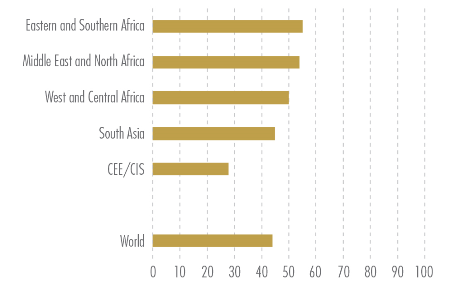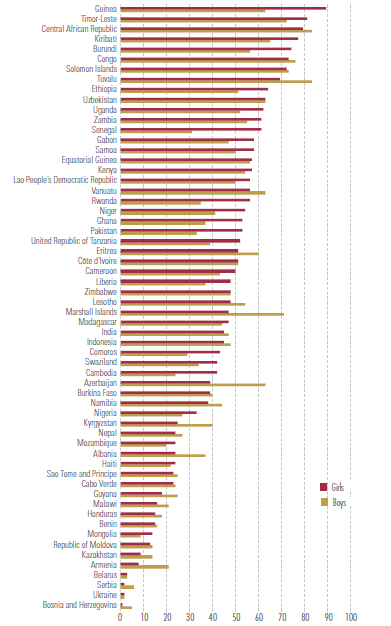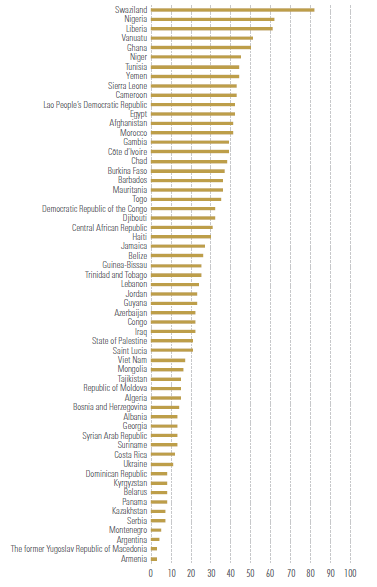Although violence against children is found worldwide, the reasons it occurs and persists may vary in different cultures. Understanding the norms that govern a society can provide clues to the underlying causes of such violence and how it can be prevented. Different social norms can help explain the widespread use of violence against children. In certain cultures, for example, violence may be perceived as a normal and acceptable way to resolve conflict. Data on attitudes towards wife-beating offer clues on how girls and women are perceived within a given society. Such information may also help explain why intimate partner violence against adolescent girls persists in many countries. Examining attitudes towards corporal punishment sheds light on cultural views regarding child-rearing and offers relevant insights for the development of strategies aimed at promoting positive parenting practices.
DATA SOURCES
Data are derived from household surveys, most commonly Multiple Indicator Cluster Surveys (MICS) and Demographic and Health Surveys (DHS), in which women (and men, where applicable) are asked whether they think a husband (or partner) is justified in hitting or beating his wife (or partner) under certain circumstances. Questions are addressed to all women and men aged 15 to 49 years, regardless of their marital status and experience of violence.
MAIN INDICATORS
The standard indicator refers to the percentage of women and men aged 15 to 49 years who think a husband is justified in hitting or beating his wife in at least one of the following circumstances: 1) she goes out without telling him, 2) she neglects the children, 3) she argues with him, 4) she refuses sex with him, or 5) she burns the food. Some countries have adapted the standard questionnaire to their social contexts by including different circumstances, such as the woman spends too much money, she disobeys, she is unfaithful, she insults him, she neglects household chores, she disrespects her in-laws, or she speaks about the need to protect herself against HIV.
In some surveys, data are collected on an expanded age range for men (commonly ages 15 to 54 or 59 years).
INTERPRETING THE DATA
Supportive attitudes should not necessarily be interpreted as approval of wife-beating, nor should they imply that a woman or girl will inevitably become a victim of domestic violence. Rather, they should be seen as indicative of the degree of social acceptance of such practices. This can be influenced by the perception that women and girls have a lower status in society than men and boys or the expectation that they should fulfil certain gender roles.
MICS MODULE ON ATTITUDES TOWARD DOMESTIC VIOLENCE
MICS surveys have a standardized module on attitudes toward domestic violence.
Download the MICS module on attitudes toward domestic violence (PDF)







